Places Where Women Made History

Some people consider the single most important place in U.S. women's history to be Seneca Falls, New York, where on July 19, 1848, the first women's rights convention was held. Seneca Falls was the home of Elizabeth Cady Stanton, who, along with abolitionist Lucretia Mott, organized the convention.
The National Women's Hall of Fame was founded in 1969 in Seneca Falls. The Hall inducts distinguished women and offers programs and exhibits in Seneca Falls; New York's Finger Lakes area; Washington, DC; and elsewhere. The mission of the National Women's Hall of Fame is: “To honor in perpetuity those women, citizens of the United States of America, whose contributions to the arts, athletics, business, education, government, the humanities, philanthropy and science, have been the greatest value …”
Since 1980 Seneca Falls has also been the site of the Women's Rights National Historic Park. Among its numerous features are the chapel where the 1848 convention was held; a 100-foot-long wall engraved with the “Declaration of Sentiments,” an equal-rights proclamation that was signed at the convention; and the house where Stanton and her family lived after moving from Boston in 1847. Stanton said that the difficulty of daily life in Seneca Falls, where for the first time she was alone in caring for a large house and three small children, made her a feminist.
Iolani Palace
Honolulu, Hawaii
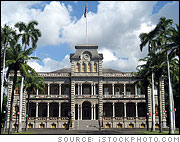 |
The only royal palace in the United States, Iolani was the official residence of the Hawaiian monarchy from 1882 until foreign merchants overthrew Queen Liliuokalani in 1893. The queen was also imprisoned there for eight months in 1895 following efforts to restore her to the throne. Portraits of several Hawaiian queens are on display at Iolani.
Emily Dickinson House
Amherst, Massachusetts
Poet Emily Dickinson (1830-1886) was born in this house and lived most of her life there, rarely leaving its beautiful grounds. After Dickinson's death her sister Lavinia discovered hundreds of poems hidden in the house. Thanks to Lavinia, these poems were published, and Dickinson is now regarded as one of the greatest American poets.
Harriet Tubman Home for the Aged
Auburn, New York
For more than a decade the legendary Harriet Tubman (1820-1913) risked her life to lead hundreds of enslaved people out of the South to freedom in the North. Tubman also worked as a nurse and scout during the Civil War. Her Home for the Aged was her last major project. It is now a museum honoring Tubman's life and work
Calamity Jane
Deadwood, South Dakota
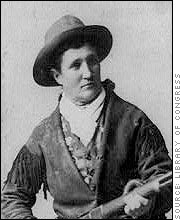 |
Calamity Jane and Wild Bill Hickok rode into the wild gold-mining town of Deadwood, S.D., in June 1876. Hickok's residence was of short duration as he was shot while playing poker on August 2. Jane left the town in the fall of 1877 and wandered mostly around the West until she returned to Deadwood a few years before her death in 1903. She is buried next to Hickok in Deadwood's Mt. Moriah Cemetery. The entire city of Deadwood is today a National Historic Landmark. In an effort to encourage tourism, gambling was legalized in 1989, a move that Wild Bill and Calamity would no doubt approve.
The Jane Addams Hull-House Museum
Chicago, Illinois
The Jane Addams Hull-House Museum Chicago, Illinois Founded by Jane Addams in 1889, Chicago's Hull House may be the most famous of the “settlement houses” that improved life for immigrant families in poor city neighborhoods. Hull House offered classes, daycare, job assistance, and a place for labor unions to organize. Like most other settlement houses, Hull House was staffed mainly by women.
Juanita Craft House
Dallas, Texas
Both Martin Luther King, Jr., and President Lyndon Johnson visited this ordinary home to seek advice from the extraordinary civil-rights activist Juanita Craft (1902-1985). Craft, a dressmaker, joined the National Association for the Advancement of Colored People (NAACP) in 1935. By 1958 she had founded 182 rural chapters of the NAACP.
Rosie the Riveter/World War II Home Front National Historical Park
Richmond, California
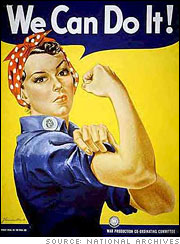 |
Rosie made her debut in the song “Rosie the Riveter,” but it's the brawny image on the poster that's the vivid reminder of the women who took over traditionally male jobs during World War II, pumping out airplanes and ships for the war effort. The Rosie the Riveter Memorial, designed by Cheryl Barton and Susan Schwartzenberg, is near the Richmond, Calif. shipyards where liberty ships were built. It's part of the World War II Home Front National Historical Park, dedicated to those who stayed home to win the war.
Laura Ingalls Wilder Memorial Society
De Smet, South Dakota
Six of Laura Ingalls Wilder's Little House books are set in the small prairie town of De Smet. Today you can tour her family's first Dakota house, their final home in town, and a replica of Laura's school. You can also visit the Big Slough, the five cottonwood trees Laura's Pa planted to honor "his girls," and the cemetery where the family is buried.
Salem Witch Trials
Salem, Mass.
The Salem witchcraft trials started in January 1692, a time when the strange behavior of young girls was cause enough for a trial and hanging. Your cow died? That witch down the street did it. By the time the hysteria ended later that same year, 24 women were dead. Today, Salem is known as Witch City and commemorates these times with tours of sites connected to the trials, including the Witch House, which was actually the house of one of the trials' magistrates. In 1992 a memorial was raised to the victims of the witch hunt. Salem today is much more tolerant of witches—it has even has an honorary position for “the Official Witch of Salem, Mass.”
Madame C. J. Walker Building
Indianapolis, Indiana
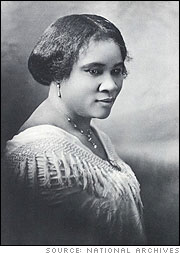 |
After moving from Denver and then to Pittsburgh, African-American hair-care mogul Madame C. J. Walker ultimately based her operations in Indianapolis in 1910. While she herself moved to New York City in 1916 and died there in 1919, most of the Walker manufacturing remained in Indianapolis, a city with good railroad connections and a healthy African-American population. Her dream to build a multipurpose building for the black community was only realized by her daughter years after her death. The building had a theater, restaurant, offices, and stores, as well as the Walker company operations. The Walker Theater closed in 1965, but during a renaissance of the area in the 1980s it was renovated and reopened in 1988 and is now a National Historic Landmark. The Walker Theater is one of the few remaining examples of the Africa-inspired architecture popular in the 1920s and 1930s.
Lowell National Historical Park
Lowell, Massachusetts
In the 1830s the mills in the booming industrial town of Lowell employed women almost exclusively. Thousands of young women left their farm homes to live together at Lowell boardinghouses and work in the mills. Today, the tours and exhibits and Lowell National Historic Park bring to life the contributions of these women to the Industrial Revolution.
Mary McLeod Bethune Council House
Washington, DC
This three-story townhouse was the Washington, DC, residence of educator Mary McLeod Bethune (1875-1955) and the original headquarters of the National Council of Negro Women. It is now a National Historic Site that hosts a variety of programs. A carriage house in back contains the National Archives for Black Women's History.
Amelia Earhart Birthplace
Atchison, Kansas
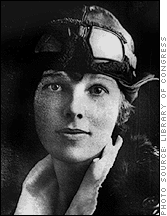 |
Amelia Earhart was actually born in her maternal grandparents' home in Atchison, Kansas. Amelia's family lived in several towns during her childhood and her father's job as a railroad agent kept him and the family on the move. They traveled often, instilling in Amelia a love for adventure and new places. Her many winters spent with her grandparents were a stable and happy time fondly remembered by the aviator. The Ninety-Nines, the International Organization of Women Pilots, took over the Earhart birthplace in 1984 and have been renovating and restoring the house as a museum, which was dedicated in 1997.
Orchard House
Concord, Massachusetts
Author Louisa May Alcott (1832-1888) lived in Orchard House with her family for nearly 20 years and is thought to have written her classic novel Little Women there. Now a National Historic Landmark, Orchard House is preserved much as it was when the Alcotts lived there. Visitors can tour the home and imagine how the family lived.
Susan B. Anthony House
Rochester, New York
A National Historic Landmark, this house was the home and headquarters of feminist Susan B. Anthony (1820-1906) for nearly half a century. Countless meetings to organize for women's rights were held in this house. In 1872, Anthony was famously arrested in the house because she had voted in the presidential election-a criminal act for a woman.
Woodlawn Cemetery
Bronx, New York
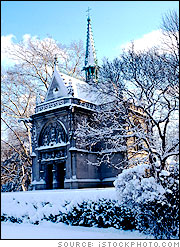 |
Although the distinguished women who are buried in Woodlawn Cemetery didn't make their mark there while living, visiting this 400-acre cemetery can be a stroll through the history and culture of the nineteenth and twentieth centuries. Among those interred in the rolling hills of the North Bronx are Elizabeth Cady Stanton, Carrie Chapman Catt, Gertrude Ederle, Antoinette Perry, Nellie Bly, Madame C. J. Walker, and Celia Cruz. Respectful visitors are welcome, but you'll need a permit for photography.
| Gender Issues |







